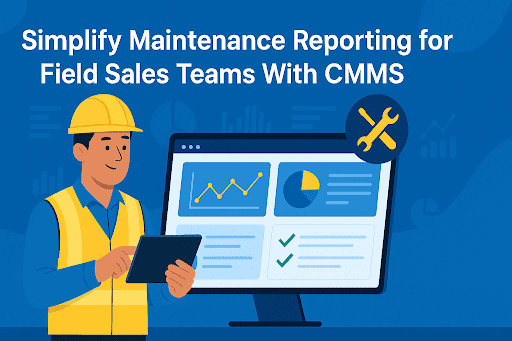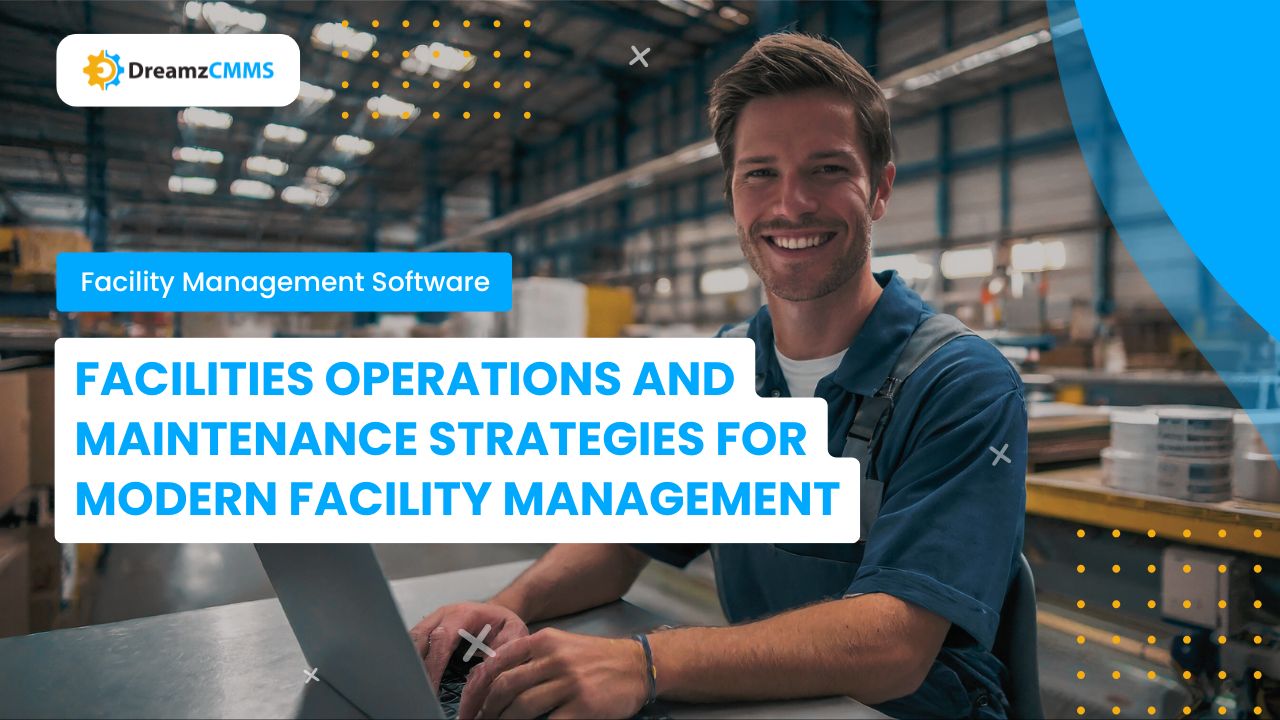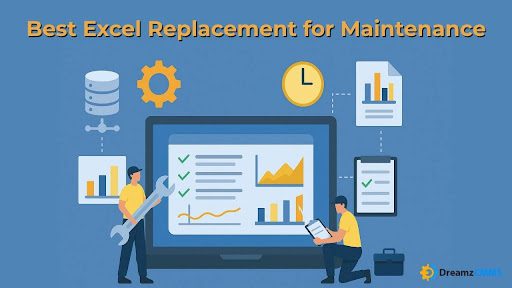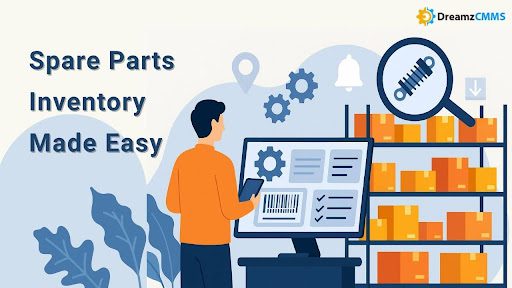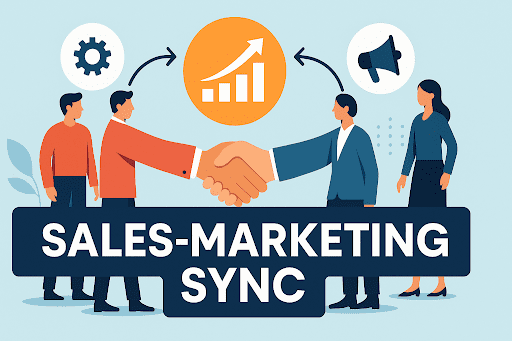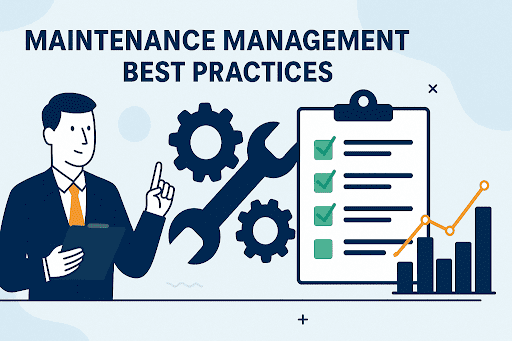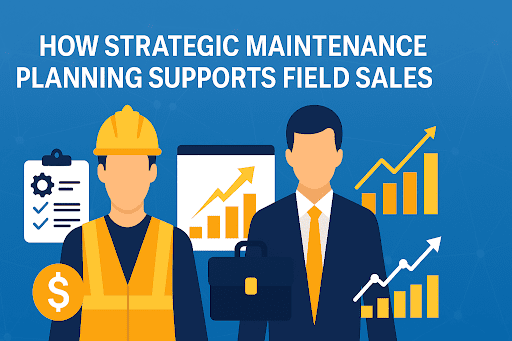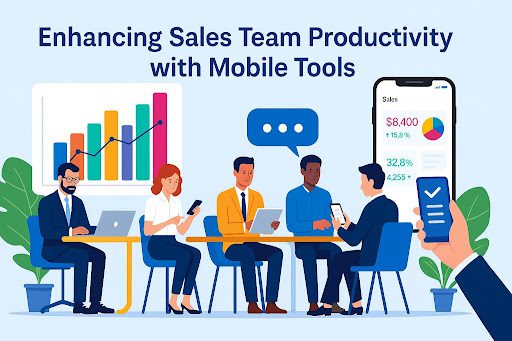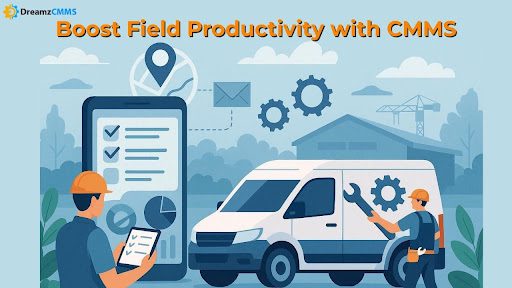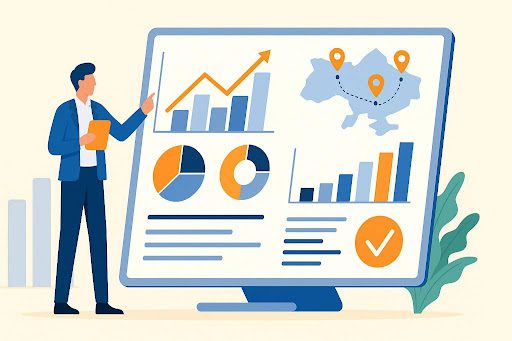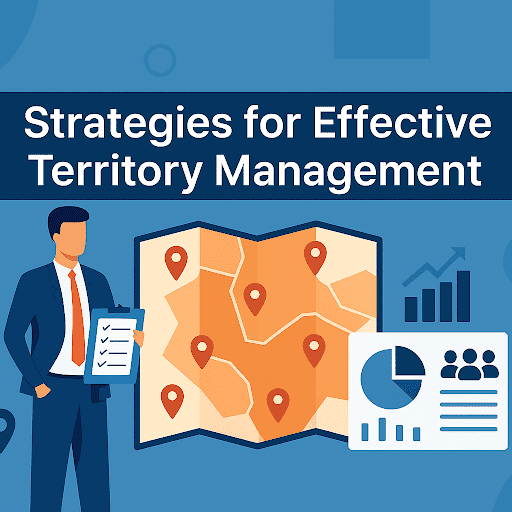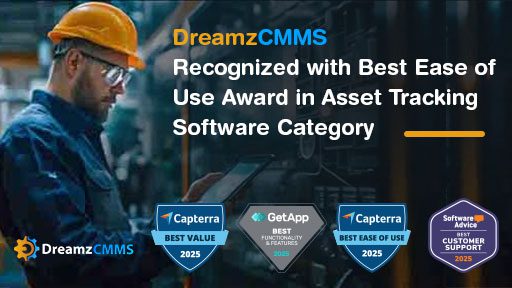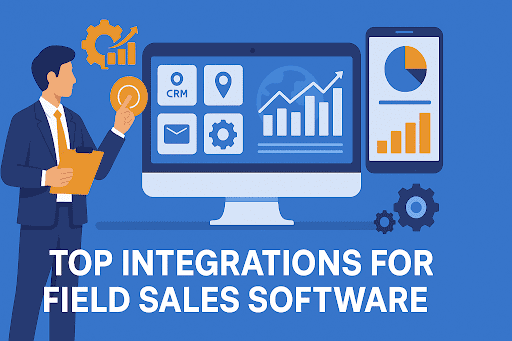 BACK TO Blog
BACK TO Blog
Asset Rental Management
Field Sales
In an increasingly competitive business environment, organizations are under constant pressure to optimize performance, minimize downtime, and maintain consistent service delivery. One of the most effective ways to achieve these goals is through the implementation of smart asset management strategies. These strategies enable companies to make informed decisions, extend the
- May 14, 2025
- DreamzCMMS Team
- 9 minutes read

- May 14, 2025
- DreamzCMMS Team
- 9 minutes read
In an increasingly competitive business environment, organizations are under constant pressure to optimize performance, minimize downtime, and maintain consistent service delivery. One of the most effective ways to achieve these goals is through the implementation of smart asset management strategies. These strategies enable companies to make informed decisions, extend the lifespan of their assets, reduce costs, and improve overall operational efficiency.
What Are Asset Management Strategies?
Asset management strategies refer to a systematic approach to acquiring, operating, maintaining, upgrading, and disposing of assets in the most cost-effective way. Whether you're dealing with manufacturing equipment, IT infrastructure, real estate, or transportation fleets, a solid strategy ensures that every asset contributes maximum value throughout its lifecycle.
Smart strategies incorporate data-driven asset decisions, predictive technologies, automation tools, and strategic asset planning to align asset performance with organizational goals. The shift from reactive to proactive management allows businesses to prevent breakdowns, optimize resource allocation, and maintain compliance with industry regulations.
Importance of Smart Asset Management
Smart asset management strategies are no longer a luxury they’re a necessity for businesses seeking to thrive in a digitally driven economy. These strategies ensure:
- Improved asset visibility and control
- Reduction in unplanned downtime
- Optimized maintenance schedules
- Better capital forecasting through capital asset planning
- Increased return on investment (ROI)
By integrating intelligent tools such as IoT, AI, and cloud-based CMMS, organizations can manage their physical assets more efficiently and achieve operational excellence.
Looking to streamline your asset processes, reduce downtime, and improve operational visibility?Explore how Asset Maintenance Management Software from DreamzCMMS can help you digitize maintenance workflows, automate tasks, and drive measurable ROI. |
Key Components of Effective Asset Management Strategies
1. Asset Lifecycle Management
A foundational component of asset management strategies is managing the asset through its entire lifecycle—from procurement and deployment to maintenance and retirement. Asset Lifecycle Management ensures that assets are used efficiently and replaced or upgraded at the optimal time.
Lifecycle management includes:
- Asset acquisition planning
- Usage and performance monitoring
- Scheduled maintenance
- Depreciation and replacement planning
This process is supported by long-term asset planning, which allows organizations to align asset replacement and upgrade cycles with strategic business goals.
2. Predictive Maintenance and Monitoring
Predictive maintenance is a game-changer in modern asset management strategies. Unlike reactive models, which wait for failures to occur, predictive approaches anticipate issues before they escalate. For a deeper understanding of how these models compare, explore our guide on Preventive Maintenance vs Reactive Maintenance.
Benefits include:
- Reduced downtime
- Lower maintenance costs
- Improved safety
Enterprises that adopt predictive models gain operational efficiency, extend asset lifespans, and enhance overall resilience.
3. Data-Driven Decision Making
Smart asset management relies heavily on data-driven asset decisions. Advanced analytics platforms and CMMS software can provide actionable insights into performance trends, repair history, and cost per asset.
This enables organizations to:
- Prioritize asset replacements
- Conduct accurate capital asset planning
- Measure asset utilization metrics
By leveraging robust data sets, decision-makers can confidently plan, allocate, and invest in assets that deliver the greatest value.
Implementing Smart Asset Management Strategies
1. Conduct a Full Asset Audit
Conducting a full audit helps identify the condition, usage, and value of each asset. This audit is strengthened through digital asset tracking methods such as RFID and barcoding, which ensure real-time location and status updates. Learn how RFID supports Inventory Accuracy with RFID Asset Tracking Software to improve asset control and inventory precision.
2. Define KPIs for Asset Performance
Establishing and monitoring performance metrics is crucial. Key KPIs may include:
- Mean Time Between Failures (MTBF)
- Mean Time to Repair (MTTR)
- Asset Utilization Metrics
- Total Cost of Ownership (TCO)
Evaluating these indicators ensures that your asset management strategies are delivering results and highlights areas needing improvement.
3. Leverage CMMS and EAM Systems
Centralized systems like CMMS and Enterprise Asset Management tools streamline all asset-related processes. These platforms support:
- Work order automation
- Real-time monitoring
- Mobile team coordination
- Compliance tracking
- Maintenance optimization
They also enable integrated asset risk assessment, helping organizations track asset condition, safety issues, and regulatory concerns.
4. Train and Empower Your Workforce
Success hinges on adoption. Equip your workforce with the knowledge and tools needed to execute smart asset strategies. Training should cover data interpretation, asset lifecycle handling, and how to act on data-driven asset decisions.
Real-World Applications of Asset Management Strategies
Case Study 1: Manufacturing Excellence Through Predictive Maintenance
A leading automotive parts manufacturer implemented smart asset management strategies to overcome frequent equipment breakdowns. By integrating a CMMS with IoT-based sensors, they gained real-time visibility into machinery conditions.
Through continuous monitoring and asset risk assessment, they were able to anticipate failures and schedule proactive maintenance. This resulted in:
- 25% reduction in unplanned downtime
- 18% increase in asset lifespan
- Enhanced worker safety through predictive alerts
These improvements allowed them to streamline operations and exceed production targets consistently.
Case Study 2: Public Utility Optimization with Long-Term Planning
A regional water utility serving over 2 million residents faced challenges related to aging infrastructure and increasing regulatory requirements. The utility adopted a strategic approach focusing on long-term asset planning and sustainable asset practices.
Using GIS mapping and digital asset tracking, they were able to identify high-risk assets, prioritize replacements, and align projects with community budgets. They also improved energy efficiency by replacing outdated pumps, achieving sustainability and cost-reduction goals simultaneously.
This resulted in:
- 30% increase in maintenance productivity
- Stronger compliance with environmental regulations
- Higher public trust due to improved service quality
Role of Technology in Asset Management Strategies
IoT and Sensors
IoT-enabled devices continuously monitor performance and usage. These sensors generate valuable real-time data, allowing for:
- Predictive alerts
- Digital asset tracking
- Maintenance scheduling
- Incident prevention
AI and Machine Learning
AI analyzes historical patterns and usage data to anticipate failure points and maintenance needs. This supports maintenance optimization and enhances long-term asset planning.
Cloud-Based Platforms
Modern CMMS platforms are cloud-based, ensuring scalable access, remote operation, and cross-departmental collaboration. These platforms drive capital asset planning and strategic asset planning initiatives across facilities and business units.
Benefits of Asset Management Strategies
In addition to minimizing breakdowns and reducing costs, implementing robust asset management strategies offers the following advantages:
Enhanced Asset Transparency
Through real-time dashboards and analytics, managers can see asset status, maintenance history, and performance data across all sites. This transparency enables quicker response to issues and supports data-driven asset decisions
Better Capital Allocation
With accurate insights into asset conditions and usage patterns, organizations can make smarter decisions about capital expenditure. This supports more efficient capital asset planning, helping businesses invest in high-value upgrades instead of spreading budgets thin across low-priority repairs. Learn more about Maximizing ROI with Asset Maintenance Management Software and how it supports long-term financial efficiency.
Compliance and Safety Assurance
Proper asset risk assessment ensures that compliance standards—whether related to OSHA, ISO, or EPA—are met consistently. Detailed records and automated reminders help prepare for audits, reducing the risk of fines and enhancing organizational credibility.
Industry-Specific Asset Management Strategies
Manufacturing
Manufacturers benefit from predictive tools that help reduce breakdowns and optimize production lines. Integrated systems aid in digital asset tracking, condition monitoring, and real-time alerts.
Facility Management
Facility managers focus on extending infrastructure life cycles, using sustainable asset practices and maintenance optimization to enhance HVAC, lighting, and energy systems. Using integrated platforms such as Facility Management Software, they can track performance, reduce operational costs, and ensure regulatory compliance with ease.
Transportation and Logistics
Fleets rely on asset utilization metrics, fuel monitoring, and GPS-based tracking to ensure peak efficiency. Telematics and mobile apps support data-driven asset decisions, and solutions like < href="https://dreamzcmms.com/field-service-management-software/">Field Service Management Software ensure real-time coordination between field technicians and central operations.
Utilities
In utilities, asset risk assessment and compliance monitoring are essential. Monitoring systems predict outages, enabling consistent delivery and regulatory adherence.
Common Challenges and How to Overcome Them
1. Data Silos and Inaccuracy
Solution: Use integrated platforms that consolidate data, enabling accurate asset risk assessments and centralized digital asset tracking.
2. High Initial Investment
Solution: Begin with high-impact assets and scale with modular systems that support capital asset planning over time.
3. Lack of Strategy Alignment
Solution: Link asset decisions with business goals through strategic asset planning and long-term asset planning.
Measuring the Success of Asset Management Strategies
To measure the effectiveness of your asset management strategies, track metrics such as:
- Reduced asset downtime
- Cost savings from optimized maintenance
- ROI on asset purchases
- Accuracy of asset utilization metrics
- Reduced asset downtime
Conduct periodic audits to validate your approach and refine your roadmap based on performance results.
Future Trends in Asset Management Strategies
Digital Twins and Simulation
Digital twins are becoming a powerful tool for visualizing and testing asset scenarios virtually. They’re ideal for long-term asset planning and risk mitigation.
Digital Twins and Simulation
Digital twins are becoming a powerful tool for visualizing and testing asset scenarios virtually. They’re ideal for long-term asset planning and risk mitigation.
Sustainable Asset Practices
Sustainability is increasingly built into asset strategies. Organizations now consider environmental impact during acquisition and disposal phases—this is the future of sustainable asset practices.
AI-Driven Capital Planning
AI will continue to evolve, assisting with capital asset planning by predicting optimal investment timing and minimizing overspending.
Sustainability as a Core Asset Strategy
Incorporating sustainable asset practices is no longer optional in today’s environmentally conscious economy. Businesses are expected to reduce carbon footprints, minimize waste, and ensure responsible asset disposal.
Here’s how sustainable principles enhance asset management strategies:
- Green Procurement: Choosing energy-efficient or recyclable assets during acquisition
- Eco-Friendly Disposal: Decommissioning assets with minimal environmental impact
- Energy Monitoring: Using sensors to track and optimize consumption patterns
- Lifecycle Impact Evaluation: Factoring in environmental effects during planning
Leading companies now integrate ESG (Environmental, Social, and Governance) metrics into their long-term asset planning to attract investors, customers, and future-ready talent.
Conclusion
Incorporating smart asset management strategies is essential for achieving operational excellence. Whether through digital asset tracking, AI-driven maintenance, or long-term asset planning, organizations that embrace a data-centric, strategic approach to asset management will reduce costs, boost efficiency, and future-proof their operations.
From asset risk assessment to capital asset planning, DreamzCMMS provides all-in-one solutions to streamline asset operations and enhance decision-making.
Ready to take control of your assets and unlock true operational excellence?DreamzCMMS offers an all-in-one solution to help you automate maintenance schedules, monitor asset performance in real time, reduce unplanned downtime, and improve compliance all from one centralized platform. Whether you're in manufacturing, facility management, utilities, or logistics, our system is built to adapt to your workflows and scale with your business. Visit DreamzCMMS to explore our features, case studies, and industry-specific solutions. Want to see it in action? Book a Free Demo and discover how we can help you digitize and optimize your entire asset management lifecycle. |
Ready for More?
Talk to one of our CMMS experts and see how DreamzCMMS can simplify your maintenance operations.
Book a free consultation

